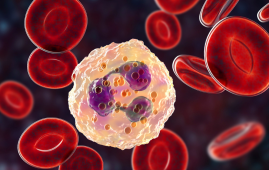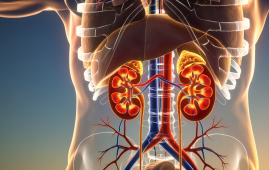

A new study published in Molecular Psychiatry has confirmed that blood-based biomarkers—particularly plasma p-tau181—can detect early signs of Alzheimer’s disease in individuals experiencing subjective cognitive decline (SCD), even before clinical symptoms or test results reflect cognitive impairment.
Blood Biomarkers Flag Early-Stage Alzheimer’s
Alzheimer’s disease (AD) often begins silently, years before memory loss becomes apparent. Researchers investigated whether blood biomarkers could distinguish SCD as a unique stage in AD progression. According to the National Institute on Aging–Alzheimer’s Association (NIA-AA), SCD represents Stage 2 of the AD continuum—where individuals report memory concerns, yet standard cognitive assessments remain normal.
These findings add important context to the ongoing clinical and research discussions around Alzheimer’s disease, such as those scheduled to be explored under the “Alzheimer’s Disease Treatment” agenda at the upcoming American Neurology Summit 2025, to be held on November 15–16, 2025, in Orlando, Florida.
Study Evaluates p-tau181 and NfL
Data was analyzed from 457 participants in the German Longitudinal Cognitive Impairment and Dementia Study (DELCODE), aged 60 and above. Subjects were categorized based on amyloid positivity and cognitive status. Plasma samples were tested for phosphorylated tau at threonine-181 (p-tau181) and neurofilament light chain (NfL) to measure tau pathology and neurodegeneration.
The study revealed that individuals with amyloid-positive SCD (A+ SCD) had significantly higher p-tau181 levels compared to cognitively unimpaired peers, and levels increased more rapidly over time. This biomarker trend mirrored those seen in mild cognitive impairment (MCI), suggesting that SCD is not just psychological—it has biological underpinnings.
Predicting Cognitive Decline
Importantly, elevated baseline p-tau181 levels were strongly associated with faster cognitive decline, as measured by the Preclinical Alzheimer’s Cognitive Composite (PACC5). While NfL levels also reflected neurodegeneration, only p-tau181 could predict worsening cognition starting at the SCD stage. Over a three-year follow-up, nearly 30% of A+ SCD individuals with elevated p-tau181 progressed to MCI.
Implications for Early Intervention in Alzheimer’s
Neuroimaging supported these findings, showing reduced hippocampal volume in A+ SCD individuals, though significant structural changes were more evident in the MCI group. These results emphasize that biomarker changes precede anatomical brain changes, supporting the potential of plasma p-tau181 in risk stratification.
While more research is needed to validate its use in individual diagnosis, the study positions blood biomarkers as a powerful tool in early Alzheimer’s detection, potentially transforming how high-risk individuals are identified and treated.
For more information: Mengel, D., Soter, E., Ott, J.M. et al. Blood biomarkers confirm subjective cognitive decline (SCD) as a distinct molecular and clinical stage within the NIA-AA framework of Alzheimer’s disease. Molecular Psychiatry (2025). DOI: 10.1038/s41380-025-03021-0, https://www.nature.com/articles/s41380-025-03021-0
more recommended stories
 Spatial Computing Explains How Brain Organizes Cognition
Spatial Computing Explains How Brain Organizes CognitionKey Takeaways (Quick Summary) MIT researchers.
 Gestational Diabetes Risk Identified by Blood Metabolites
Gestational Diabetes Risk Identified by Blood MetabolitesKey Takeaways (Quick Summary for Clinicians).
 Phage Therapy Study Reveals RNA-Based Infection Control
Phage Therapy Study Reveals RNA-Based Infection ControlKey Takeaways (Quick Summary) Researchers uncovered.
 Pelvic Floor Disorders: Treatable Yet Often Ignored
Pelvic Floor Disorders: Treatable Yet Often IgnoredKey Takeaways (Quick Summary) Pelvic floor.
 Urine-Based microRNA Aging Clock Predicts Biological Age
Urine-Based microRNA Aging Clock Predicts Biological AgeKey Takeaways (Quick Summary) Researchers developed.
 Circadian Control of Neutrophils in Myocardial Infarction
Circadian Control of Neutrophils in Myocardial InfarctionKey Takeaways for HCPs Neutrophil activity.
 E-Cigarette Use and Heart Attack Risk in Former Smokers
E-Cigarette Use and Heart Attack Risk in Former SmokersKey Takeaways for Clinicians and Nurses.
 36-Week Pre-eclampsia Screening May Reduce Term Risk
36-Week Pre-eclampsia Screening May Reduce Term RiskA New Preventive Strategy for Term.
 Cardiovascular Risk and Sudden Cardiac Death in Diabetes
Cardiovascular Risk and Sudden Cardiac Death in DiabetesRising Sudden Cardiac Death (SCD) Risk.
 Poor Kidney Function and Alzheimer’s Biomarkers Explained
Poor Kidney Function and Alzheimer’s Biomarkers ExplainedPoor kidney function may influence levels.

Leave a Comment